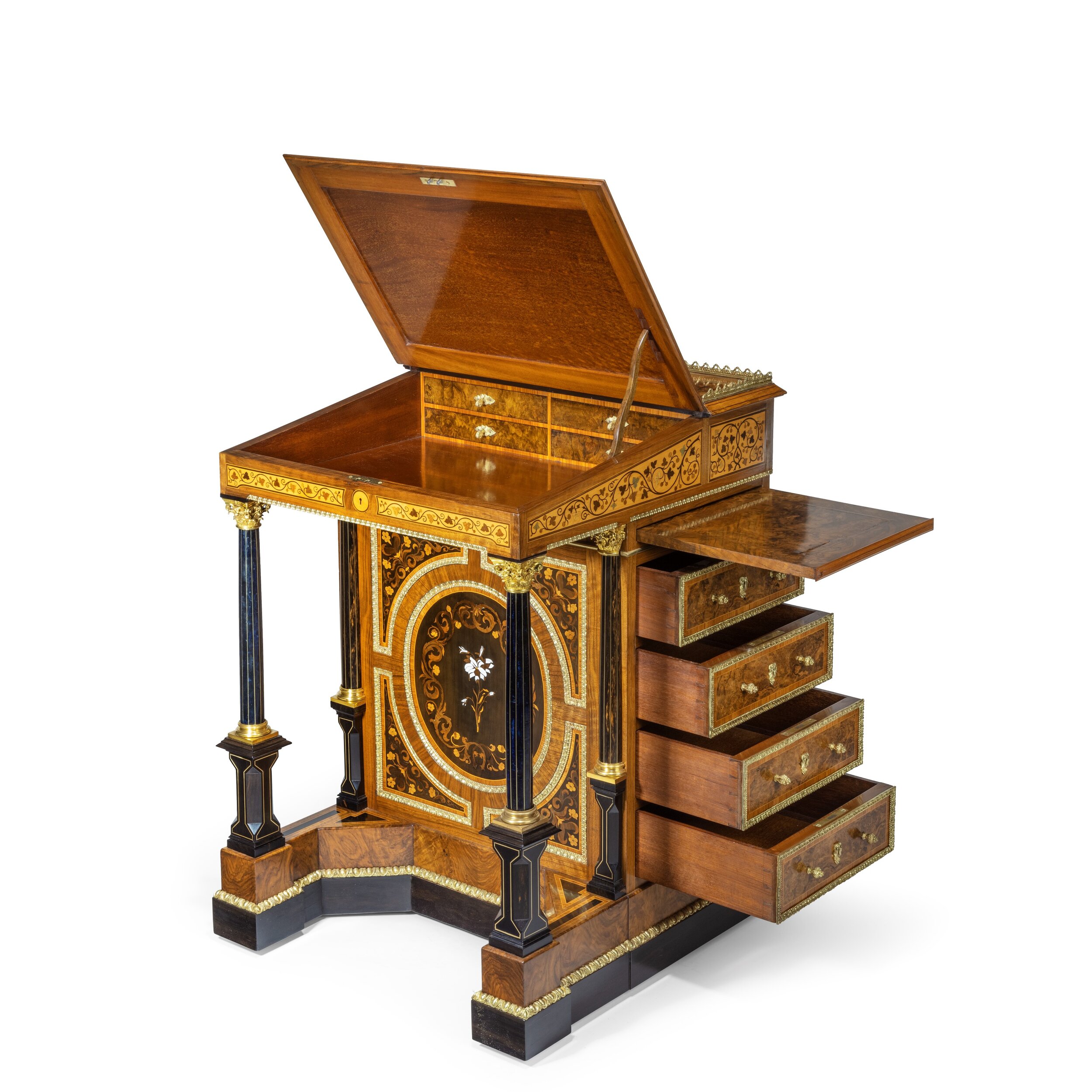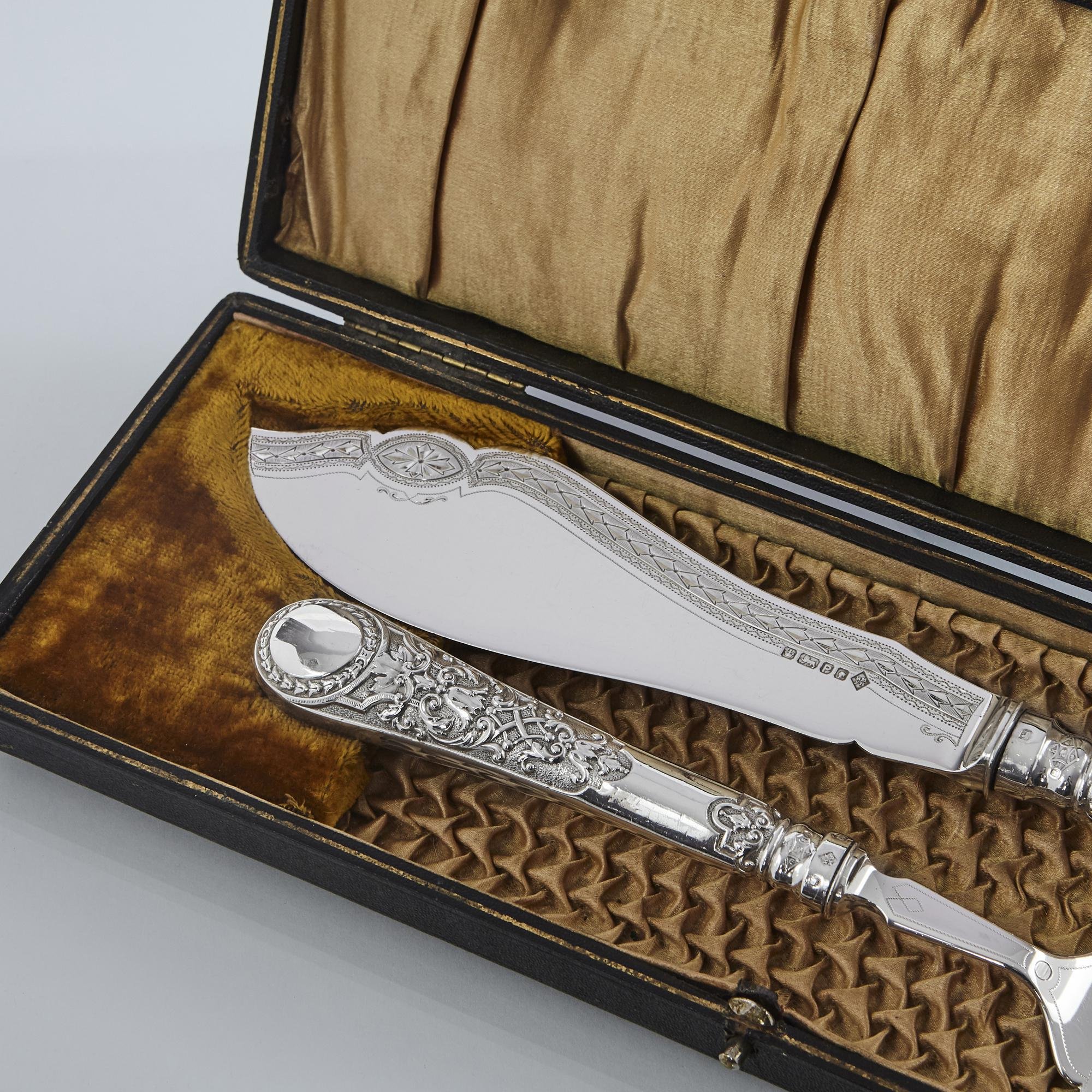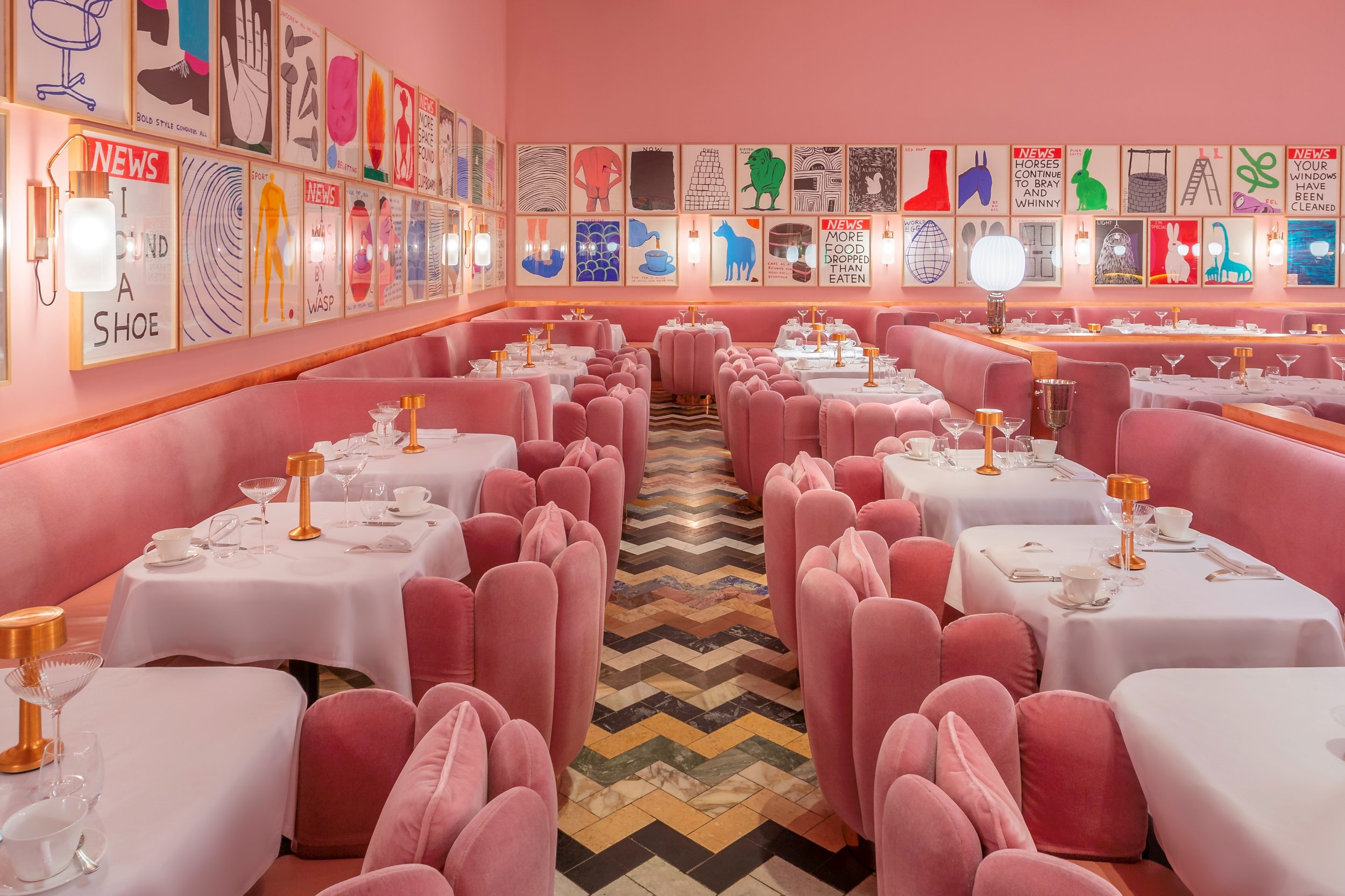Finding a Purpose
30 July 2020
How to make a statement with antique furniture.
Poppy McKenzie Smith
Poppy McKenzie Smith writes for The Telegraph about old, fast cars and spends most of her time at auctions encouraging other people to buy them. In 2018, she was involved in the sale of a 1961 Aston Martin which became the most expensive British car ever sold in Europe.
What do you get for the man who has everything? According to Lennox Cato, celebrated antique dealer and Antiques Roadshow expert, a quill rack may be the very thing. What’s more, he just so happens to have one in stock.
The exquisite 18th century mahogany box caught my attention as an example of how even the most defunct pieces of furniture and decoration can still captivate buyers and collectors in the modern age. From spindly Regency patience tables to imposing Victorian teapots, antique showrooms are often filled with ornate items no longer needed in the home – but who is buying them, and why?
According to Cato, there is no one type of client. They may live in a castle or a cul-de-sac, but they are united in their desire “not to have ordinary things,” he explains. “They seek out objects which are more than purely functional; they want functionality with a twist.”
Arguably, furniture has never been just about function, despite its etymological claims to the contrary. Almost as soon as man created chairs, chests and tables, he went about decorating them. Chairs dating from as far back as 3200 BCE have been unearthed in Ancient Egypt, ornately adorned with carved ivory duck heads, bronze hinges and intricately woven reed patterns. In ancient Rome, both wooden and stone furniture is known to have been veneered to enhance its appearance and make it appear more expensive.
However, the impression of monetary value is no longer top priority for those furnishing their homes – today’s strongest currency is singularity. In a world where multi-million pound interior design projects can be mimicked on a shoestring through the likes of Wayfair and IKEA, the truly discerning seek out individual objects which add something to a room other than a simple splash of colour.
“Genuine statement pieces never go out of fashion…they become conversation pieces in a room,” Cato explains. “There are some pieces which will always be popular, a good dining table for example, but the key is always to find one which has some unique element.”
It is this quest for interior individuality that allows seemingly defunct pieces of furniture to fit seamlessly into considered contemporary homes. Hopefully you do not suffer from sufficient maladies to merit the use of an entire Victorian medicine cabinet, but it certainly makes for a more interesting sitting room centrepiece than a standard bookcase. Similarly, a flat-pack writing desk may serve an adequate purpose in the home office, but an 18th century partner’s desk is surely the more compelling choice.
The reason for this is that our homes are, or ought to be, expressions of ourselves. While both desks serve the same purpose, one will be found in identical homes across the country, while the other is unique to its owner. The drawers which now hold phone chargers and credit cards once contained the intimate objects of an 18th century person’s life; their inkpots, ledgers, quills and seals. The brass handles may be worn from 250 years of methodical use, but perfection is in the eye of the beholder.
Ultimately, design choices should be reflective of one’s individuality rather than a passing fashion. Cato quite rightly points out that “if an item is currently in fashion, it will certainly be out of it again.”
The same credo can be applied to furniture use as well as style. Modern life may no longer have a requirement for a music sheet holder or a travelling trunk, but if an object appeals to you sufficiently to want to bring it into your home, a use will be found. Thus torchères become pedestals for a favoured sculpture or a vase of flowers, a bijouterie table houses a collection of postcards rather than diamond necklaces, and a Canterbury becomes an elegant magazine rack.
Indeed, some items may serve no purpose at all beyond decoration and self-expression. Surely no better example can be found than the perennially popular globe. With high definition imagery of every corner of the earth available via a pocket-sized phone, a globe has little to offer in the way of information or inspiration to the modern traveller. Yet their place in a gentleman’s study is unquestioned - even ‘fast fashion’ furniture websites such as Dunelm Mill have dozens on offer, proving that they are not just admired by antiquarians. They have become symbolic rather than functional items. Their presence evokes memories of a more glamorous and dangerous time, when continental expeditions meant risking life and limb rather than a lost suitcase on a baggage carousel.
It is this endless appeal of the halcyon days that keeps collectors flocking back to showrooms. Antique furniture allows us to capture the elegance of a bygone era while simultaneously fulfilling a basic need within the home – why have a plastic pen pot when you could have a mahogany quill tray? Necessity is the mother of invention – if you find you truly can’t leave a showroom without a particular beautiful object, you are sure to find a purpose for it.






